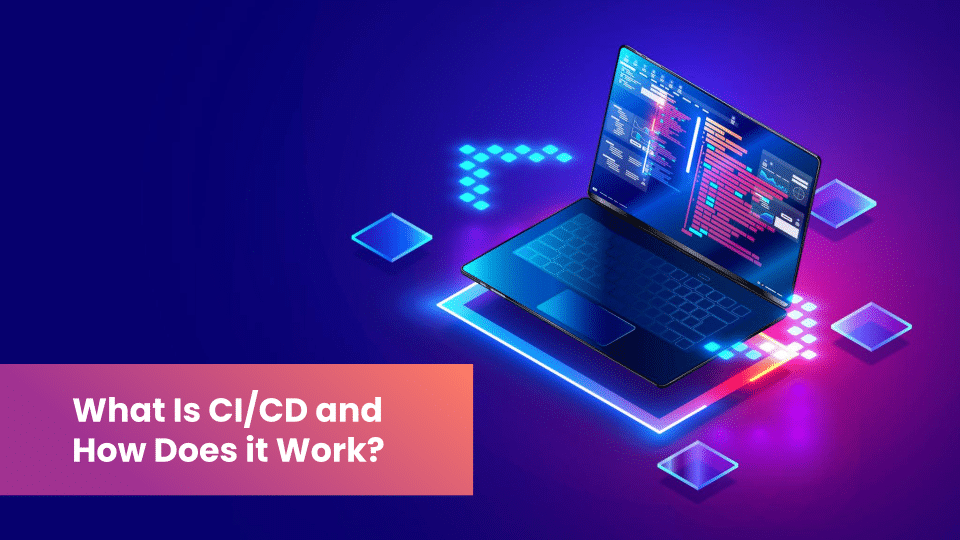Software development often involves lengthy processes that delay updates and new features. Traditional methods rely on large, infrequent releases, which can extend timelines and increase the risk of undetected issues making their way to users.
CI/CD offers a better approach, Learn how CI/CD works, and why it’s a critical practice in modern development. You’ll also discover how it supports efficient workflows and helps teams respond quickly to evolving demands.
What Is CI/CD?
CI/CD, short for Continuous Integration and Continuous Deployment, is a development approach that simplifies how teams deliver software by breaking it into smaller, manageable updates.
Evolution of CI/CD
CI/CD evolved in the early 2000s in response to the challenges inherent to traditional software development. At the time, teams relied on manual processes for building and testing, which often led to integration problems and slower releases. The introduction of agile methodologies in the late 1990s encouraged frequent iterations, but integrating code remained a bottleneck.
Automation tools like Jenkins, first released in 2004, helped developers adopt Continuous Integration by making code merges and testing more efficient. Continuous Delivery followed, focusing on preparing tested code for deployment with minimal manual effort. By the 2010s, CI/CD became a core part of DevOps by combining automation with agile principles to improve collaboration and software delivery.
CI/CD is widely used in tech-driven industries like e-commerce, financial services, and SaaS, where fast, reliable updates are essential.
Why Is CI/CD Important for Your Business?
CI/CD is a transformative approach to software development that makes it more efficient, helps minimize rework, and allows for rapid, reliable, and consistent software delivery. It includes the following benefits:
- Early Bug Detection: Bugs are identified and fixed quickly, reducing the cost and complexity of fixing them later.
- Accelerates Time-to-Market: Dramatically reduces development cycles and enables faster feature releases.
- Improves Software Stability: Implements rigorous, automated testing to catch and resolve issues early at every development stage.
- Reduces Deployment Risks: Minimizes the risk of human error through automated, batched deployments.
- Enables Continuous Feedback: You are testing each batch as it deploys and you can immediately learn if it worked or if it needs fixing.
- Optimizes Resource Usage: By automating and simplifying the software release process, CI/CD helps organizations avoid wasting resources on unnecessary downtime or overprovisioning.
How Does CI/CD Work?
CI/CD works by allowing you to automate key steps in the software delivery process, ensuring faster and more reliable updates. Here’s how it functions:
1. Code Changes:
- Developers make incremental updates to code, managing these changes through version control systems like Git to ensure consistency and collaboration.
2. Continuous Integration (CI):
- Commit and Merge: Developers use tools like GitHub or GitLab to commit updates to a shared repository.
- Automated Build: CI tools such as Jenkins, CircleCI, or Travis CI detect changes and automatically build the software.
- Testing: Automated tests run using frameworks like Selenium, JUnit, or TestNG to validate the updates.
3. Feedback and Resolution:
- Results Reporting: Test results are shared with developers, providing clear feedback on any issues.
- Issue Tracking: Identified issues are logged into project management or ticketing systems like Jira or Trello, helping developers manage and address them efficiently.
4. Continuous Deployment (CD):
- Deployment Pipeline: Successful builds are packaged and prepared for review in a staging environment.
- Staging Tests: The code undergoes final testing in a staging environment that mirrors production.
- Deployment to Production: Approved updates are deployed using automation tools like Ansible, Chef, or Terraform.
5. Peer Code Review:
- Though this step is considered a best practice and not a critical part of CI/CD, it is still worth considering. Peer code review improves code quality to help identify issues early on. Use a platform like GitHub or Bitbucket to make the process simple and accessible for everyone on the team. Encourage clear, constructive feedback and open communication during reviews.
6. Continuous Monitoring:
- Post-deployment, monitoring tools like Prometheus, Grafana, or New Relic track application performance after deployment. These tools alert teams to issues, helping maintain stability and reliability.
Boomi Is the Ultimate CI/CD Solution for Integration
CI/CD has reshaped modern software development, enabling faster updates, improved reliability, and seamless collaboration. By adopting these practices, organizations can stay ahead of competitors, deliver consistent value to users, and adapt quickly to changing demands.
Boomi’s integration platform as a service (iPaaS) takes CI/CD to the next level. Acting as a unifying integration fabric, Boomi bridges development and operations, enabling efficient workflows and ensuring error-free, rapid deployment of updates. Here’s how Boomi supports CI/CD:
- Unified Platform for Integration: Boomi bridges development and operations, ensuring swift handovers and collaborative workflows that accelerate deployment cycles.
- Automation of Deployment Pipelines: Automated workflows ensure that code changes are tested, integrated, and deployed consistently.
- Support for Agile and DevOps Methodologies: The platform promotes DevOps best practices through iterative updates.
- Error Reduction with End-to-End Visibility: Centralized monitoring tools provide clear insights across the CI/CD pipeline.
- Scalability for Enterprise Applications: Designed to support complex IT environments, Boomi’s scalable architecture can handle large-scale deployments effortlessly.
- Cross-Environment Flexibility: The system integrates with both cloud-based and on-premises environments.
- Pre-Built Connectors for Faster Integration: Boomi offers an extensive library of connectors for popular tools and platforms.
- Testing Automation: Integrated testing capabilities reduce the need for manual QA checks.
- Real-Time Data Synchronization: Boomi’s data integration ensures that updates are synchronized across systems immediately.
Learn more about the Boomi Enterprise Platform and how it can help your business.

 English
English 日本語
日本語